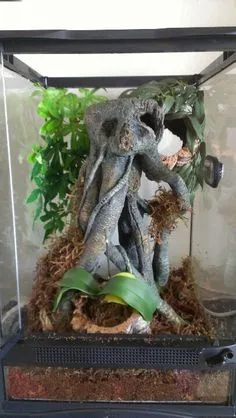Best Tarantula Enclosure
Choosing the best tarantula enclosure is crucial for the health, happiness, and longevity of your eight-legged friend. A well-designed enclosure provides a safe and stimulating environment, mimicking their natural habitat and allowing them to thrive. This guide will walk you through the essential factors to consider and provide reviews of the top 5 tarantula enclosures, helping you make an informed decision and create the perfect home for your tarantula.
Factors to Consider
Before selecting an enclosure, several factors warrant consideration. Understanding these elements will help you tailor the habitat to your specific tarantula species and ensure it meets their needs. These considerations include the species’ natural environment, size, ventilation, and the required substrate and decor. Ignoring these crucial components could lead to an unsuitable habitat and a stressed tarantula.
Tarantula Species and their Needs
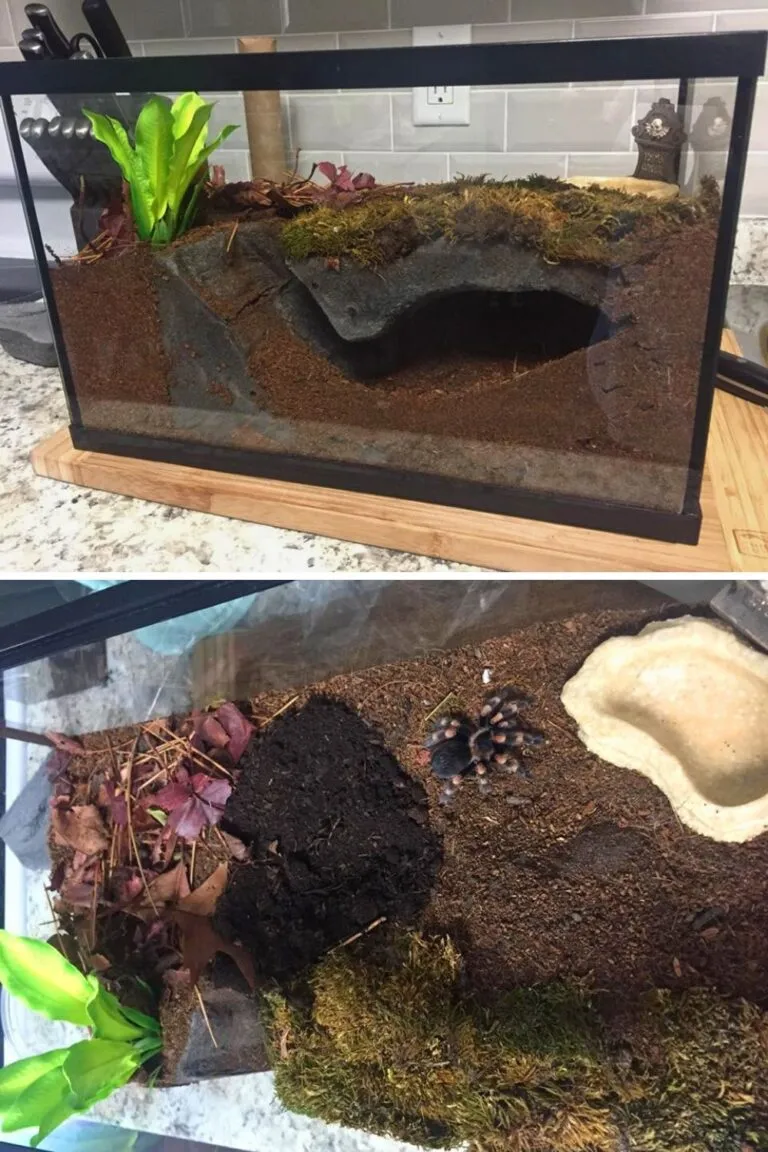
Different tarantula species have different requirements. Terrestrial species, such as the Chilean Rose Hair, require more floor space and a substrate suitable for burrowing. Arboreal species, like the Pinktoe Tarantula, need vertical space with branches and climbing opportunities. Researching the specific needs of your tarantula species is paramount. Considerations include humidity, temperature, and specific hiding spots or environmental enrichment relevant to that species. Some species are more sensitive than others.
Size and Ventilation
The enclosure’s size is a critical factor. It should be large enough for your tarantula to move around comfortably, but not so large that it feels exposed and stressed. The enclosure should be at least two to three times the tarantula’s leg span in width. Ventilation is equally important; proper airflow prevents the buildup of harmful bacteria and mold. Look for enclosures with cross-ventilation, such as vents on the sides and top. Ventilation is essential to manage humidity levels and ensure a healthy environment. Excessive moisture can cause problems with your tarantula’s health, including mold growth within the enclosure and on the tarantula itself.
Substrate and Decor
The substrate should mimic the tarantula’s natural habitat. For terrestrial species, a substrate like a mix of peat moss, coconut fiber, and a bit of vermiculite is ideal for burrowing and retaining moisture. Arboreal species do well with a substrate that retains less moisture, allowing for better ventilation. Decor includes hides, such as cork bark or artificial caves, which provide security. Add climbing branches and plants for arboreal species. Avoid sharp objects or materials that could harm your tarantula. The decor should not only provide shelter but also create an aesthetically pleasing enclosure.
Top 5 Tarantula Enclosures Reviewed
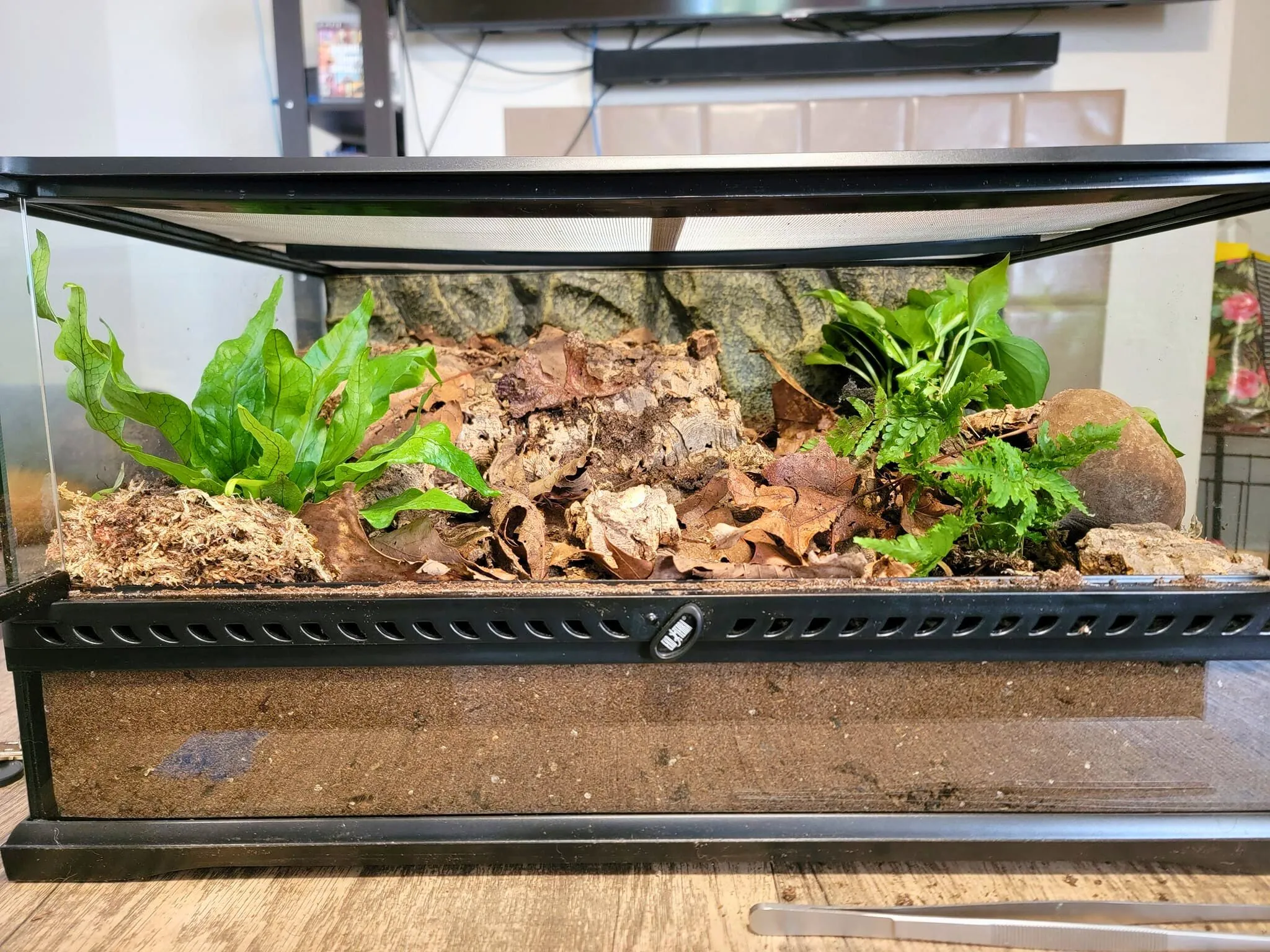
Below are reviews of the top 5 tarantula enclosures, considering ease of use, ventilation, and suitability for different tarantula species. Each enclosure has unique features, designed to cater to various tarantula needs and preferences. The recommendations below are designed to help you decide on the enclosure that is right for you. Features such as ease of access and visibility are also part of the overall assessment.
Enclosure 1 Description
Enclosure 1 is a versatile terrarium, suitable for both terrestrial and arboreal species. It features a secure locking lid and excellent ventilation. The clear design allows for easy viewing of your tarantula, making it simple to observe and monitor their behavior. This enclosure typically comes with an elevated base, providing additional substrate depth. It’s made from durable materials and is often favored for its ease of setup and maintenance.
Pros and Cons
- Pros Excellent ventilation and visibility
- Pros Secure locking mechanism
- Cons May require additional heating elements in cooler climates
- Cons May not be suitable for very large species
Enclosure 2 Description
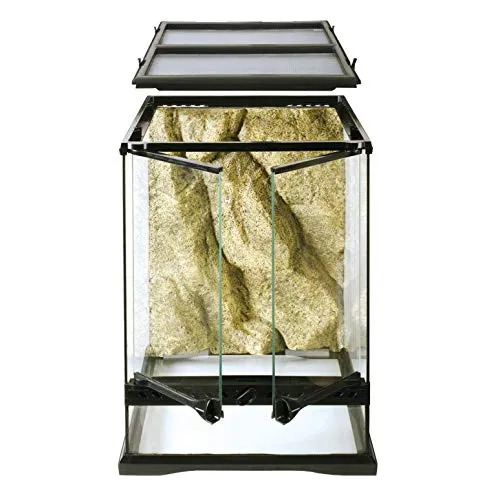
Enclosure 2 is a specifically designed tarantula habitat, often made of acrylic. This design is particularly popular for its lightweight and shatter-resistant properties. The enclosure has a front-opening door, making it easy to access and maintain. The top of the enclosure provides excellent ventilation, maintaining optimal airflow and preventing excessive humidity. The design encourages natural burrowing behavior and provides ample space for the tarantula.
Pros and Cons
- Pros Front-opening door for easy access
- Pros Excellent ventilation
- Cons Acrylic can scratch easily
- Cons May require supplemental heating
Enclosure 3 Description
Enclosure 3 is a bioactive-ready terrarium, designed to support a thriving ecosystem within the enclosure. The design incorporates features to facilitate the introduction of live plants and cleanup crews, such as springtails and isopods. This enclosure often features a drainage layer, preventing excessive moisture buildup, and provides an enriching environment for both the tarantula and the supporting ecosystem. It’s an excellent choice for those interested in creating a naturalistic habitat.
Pros and Cons
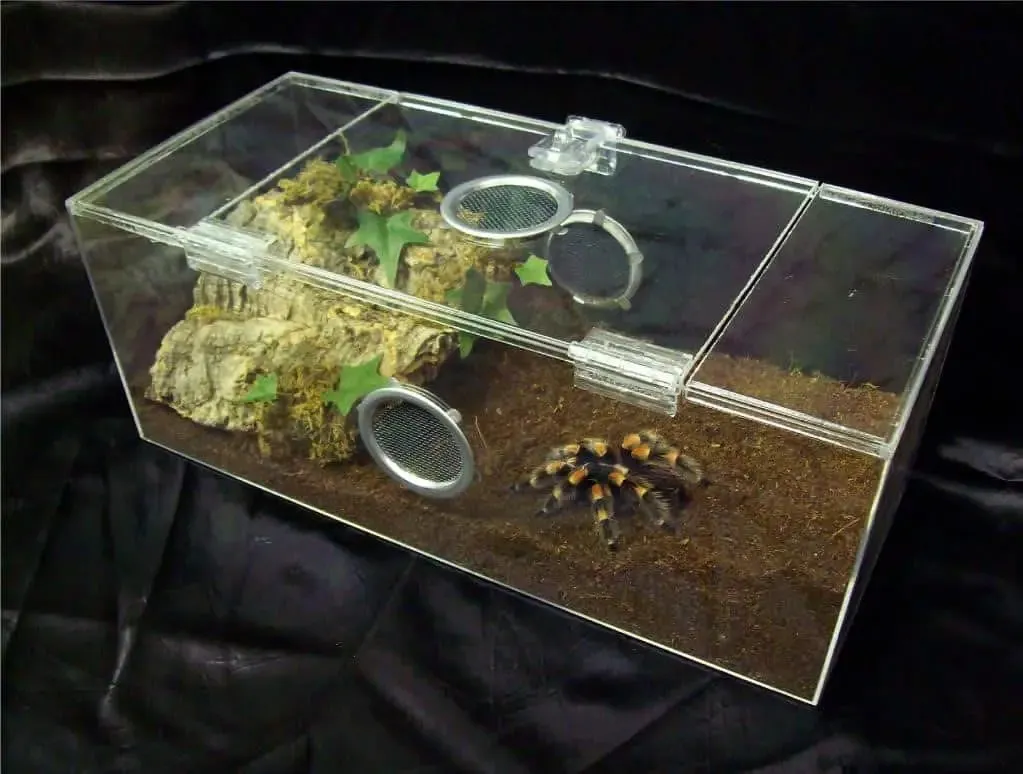
- Pros Supports a bioactive environment
- Pros Encourages natural behaviors
- Cons Higher initial setup costs
- Cons Requires careful monitoring of the ecosystem
Enclosure 4 Description
Enclosure 4 is a custom-built enclosure, often made of glass or wood. This option allows for greater customization to meet the specific needs of your tarantula. It can include features like built-in heating and lighting systems. The custom aspect means you can create the perfect habitat with unique design elements. It’s ideal for those who want to tailor every aspect of their tarantula’s living space. Such enclosures often provide optimal environmental conditions and are designed to match the species’ needs.
Pros and Cons
- Pros Highly customizable
- Pros Can incorporate advanced features
- Cons Can be expensive
- Cons Requires careful planning
Enclosure 5 Description
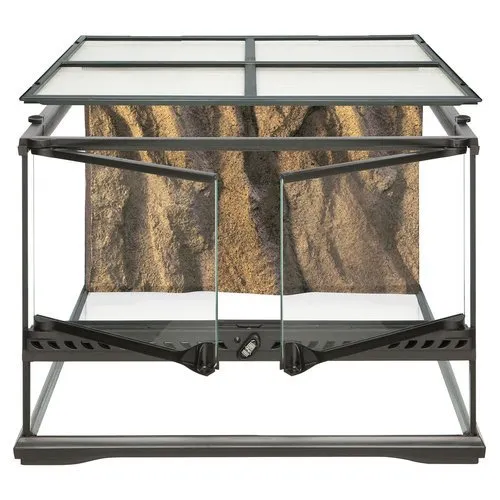
Enclosure 5 is a more budget-friendly option. These enclosures are often made from plastic or modified containers. They are suitable for beginners or those looking for an economical solution. Despite their lower cost, these enclosures can still provide adequate living conditions, especially for smaller or less demanding tarantula species. These can be a great choice for first-time tarantula owners.
Pros and Cons
- Pros Affordable
- Pros Easy to find
- Cons May lack some features
- Cons Ventilation and aesthetics may be compromised
Setting up your Tarantula Enclosure
Setting up your tarantula enclosure is a critical process that significantly affects your pet’s wellbeing. The steps to a successful setup are described in detail, ensuring your tarantula has a comfortable and safe environment. Proper setup provides a foundation for a healthy and thriving tarantula.
Substrate Selection and Setup
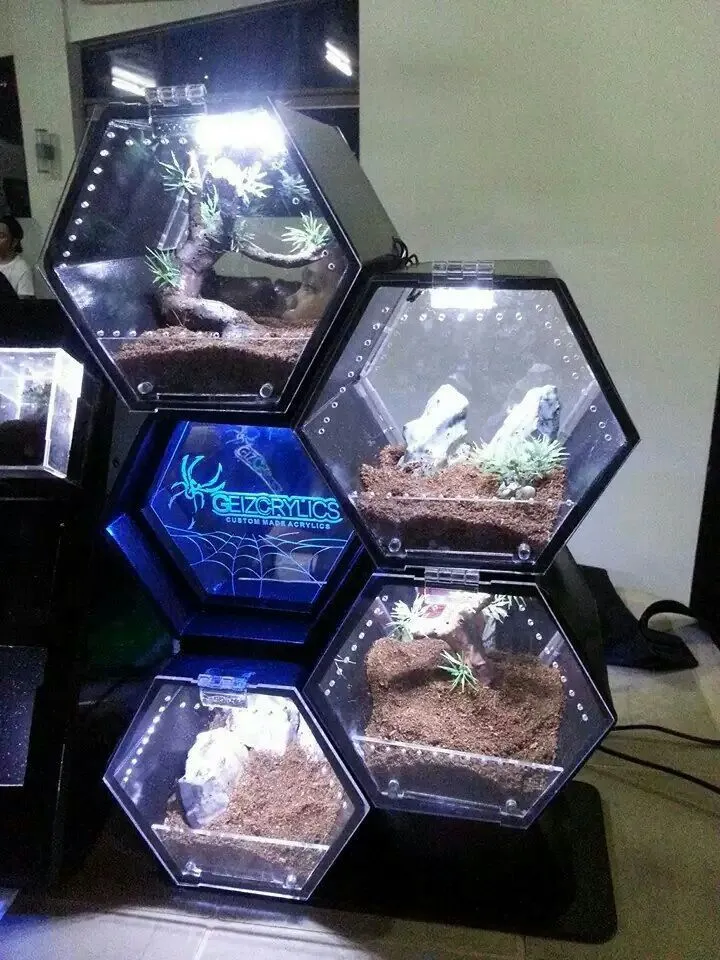
Choosing the right substrate is essential for tarantula health and comfort. For terrestrial species, use a mix of peat moss, coconut fiber, and vermiculite. This blend helps retain moisture and allows for burrowing. For arboreal species, use a substrate that drains well, such as sphagnum moss or a mix of coconut fiber and cypress mulch. Ensure the substrate layer is deep enough for burrowing species, typically 4-6 inches. It is crucial to avoid substrates that can be harmful, such as wood shavings that can cause injury.
Adding Hides and Decor
Provide hides and decor to give your tarantula security and enrichment. Cork bark, artificial caves, and even plastic plants can serve as excellent hiding spots. For arboreal species, add branches and climbing material. Arrange the decor to create a visually appealing environment. Ensure the decor is secure and does not pose a risk of injury. Your choices should mimic the tarantula’s natural habitat. Always consider the tarantula’s potential size when choosing decor items.
Maintaining Humidity and Temperature
Maintaining proper humidity and temperature levels is vital. Use a hygrometer to monitor humidity levels, adjusting them based on your tarantula’s species. Mist the enclosure with dechlorinated water to increase humidity when necessary. Use a heat source, such as a heat mat, to maintain the appropriate temperature. Ensure the heat source is regulated to avoid overheating. The exact temperature and humidity requirements will vary depending on the tarantula species. Adequate climate control is key to a healthy and active tarantula.
Common Mistakes to Avoid
Avoiding common mistakes will contribute to your tarantula’s health and wellbeing. Many issues with the tarantula’s health and behavior can be linked to environmental factors. Careful consideration of the tarantula’s needs, from enclosure size to substrate choice, will help prevent common problems.
Incorrect Enclosure Size
Using an enclosure that is either too small or too large is a common mistake. A small enclosure can restrict your tarantula’s movement, while a large one can make it feel vulnerable and stressed. Always research your species and choose an enclosure that matches its size and natural behavior.
Poor Ventilation
Poor ventilation can lead to the buildup of harmful bacteria and mold, and can cause health issues for your tarantula. Always ensure your enclosure has adequate airflow, with vents on the sides and top. This will help regulate humidity and keep the environment clean. Insufficient ventilation can severely affect the overall health and longevity of your tarantula.
Using the Wrong Substrate
The wrong substrate can cause issues such as mold growth, humidity problems, or even injuries if it’s too sharp. Research your species and use the recommended substrate, such as a mix of coconut fiber, peat moss, and vermiculite for terrestrial species. Avoid substrates that can be toxic or harmful to your tarantula.
Conclusion
Choosing the best tarantula enclosure is about creating a safe and stimulating environment. Understanding the needs of your specific tarantula, considering the factors outlined above, and avoiding common mistakes will allow you to create a thriving habitat. With careful planning and attention to detail, you can provide a wonderful home for your tarantula, allowing it to flourish and enrich your life for years to come.
